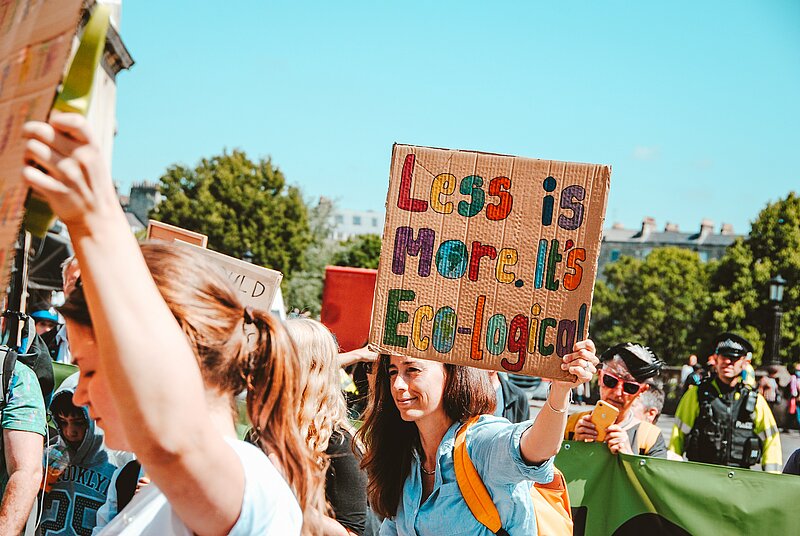Is Less Really More? The Concept of Sufficiency
In a world driven by consumerism and excess, a new concept is emerging, urging us to question our insatiable desire for more. Sufficiency, the art of finding contentment with less, is gaining traction as a pathway to a sustainable and fulfilling life. By embracing sufficiency, we can reduce our material consumption and environmental impact while meeting our basic needs. This refreshing approach contrasts the pursuit of efficiency and calls for a shift in our mindset, urging us to prioritize the well-being of our planet and future generations. As sufficiency becomes increasingly recognized as a vital component of sustainable development, it permeates various aspects of our lives, from transportation and energy consumption to waste management and plastic pollution. However, challenges and limitations persist, requiring us to reshape societal norms and values and seek systemic changes alongside individual efforts.
Sufficiency is a concept that refers to the idea of living a good life with less material consumption and environmental impact. It is about finding a balance between our needs and wants and using resources in a way that allows us to meet our basic needs without overconsuming them. Sufficiency often contrasts with efficiency, which focuses on using resources more effectively to achieve greater output. Sufficiency emphasizes the importance of reducing our overall consumption and finding ways to live more sustainably within the limits of the planet's resources.
The environmental concept of sufficiency has its roots in the sustainable development movement, which emerged in the 1980s as a response to growing concerns about the negative impacts of economic development on the environment and society. The concept of sufficiency emphasizes the need to balance economic, social, and environmental factors in decision-making and to ensure that human needs are met without compromising the ability of future generations to meet their own needs. Sufficiency is often associated with "enoughness" or "moderation." It encourages individuals and societies to prioritize moving basic needs over pursuing excessive consumption and material wealth. The concept of sufficiency is now widely recognized as an essential component of sustainable development and is increasingly being incorporated into policy frameworks and environmental initiatives worldwide.
Sufficiency can be applied to various aspects of life for a more sustainable lifestyle. Using public transportation, biking, or walking instead of driving alone in a car can reduce carbon emissions. Reducing energy consumption by turning off lights and appliances when not in use, using energy-efficient appliances, and using natural light instead of artificial lighting. Choosing clothes made from sustainable materials, buying second-hand clothing, and reducing overall clothing consumption. Reducing waste by avoiding single-use plastics, composting food waste, and recycling. Living in smaller, energy-efficient homes, using sustainable materials in construction, and reducing energy consumption.
In the context of plastic pollution, sufficiency can be applied by reducing the amount of plastic we use daily. This can be achieved by adopting a sustainable and minimalistic lifestyle, prioritizing reusable items, and reducing our reliance on single-use plastic products. One way to practice sufficiency is to avoid buying unnecessary items packaged in plastic, such as individually wrapped snacks or disposable cutlery. Instead, we can purchase items in bulk and store them in reusable containers. Avoiding single-use plastics, such as straws, plastic utensils, and water bottles, is another way to practice sufficiency. Instead, bring your reusable options or alternatives like glass or metal straws, bamboo utensils, and refillable water bottles. We can also get our own bags, bottles, and containers when shopping, dining out, or traveling to avoid using single-use plastic products. Another way to apply sufficiency in the context of plastic pollution is to repair, reuse, and repurpose items instead of buying new ones. For example, instead of buying a new plastic water bottle every time we go out, we can use a durable, reusable bottle that we refill as needed. We can also repair broken plastic items, such as toys or containers, instead of throwing them away and buying new ones. By practicing sufficiency, we can reduce our plastic consumption and minimize the amount of plastic waste in landfills, oceans, and other natural environments. This can positively impact the environment, reduce the demand for new plastic products, and promote a more sustainable way of living.
While sufficiency offers many benefits and is a promising approach to sustainable living, it also has some challenges and limitations that should be considered. One of the main challenges is changing societal norms and values. In many societies, people are taught that material possessions and consumerism are essential to success and happiness. Encouraging people to consume less and prioritize other discounts may be met with resistance or skepticism. Another critical challenge is measuring sufficiency: It can be hard to determine what constitutes "enough" in different areas of life. People may have different needs and desires for a sufficient lifestyle. Lastly, it is criticized that sufficiency may not be enough to address the scale of environmental problems we face and that systemic changes are necessary to achieve sustainability truly. While sufficiency can be essential in reducing individual consumption and waste, larger-scale policies and regulations may also be needed to address issues such as resource depletion and climate change.


